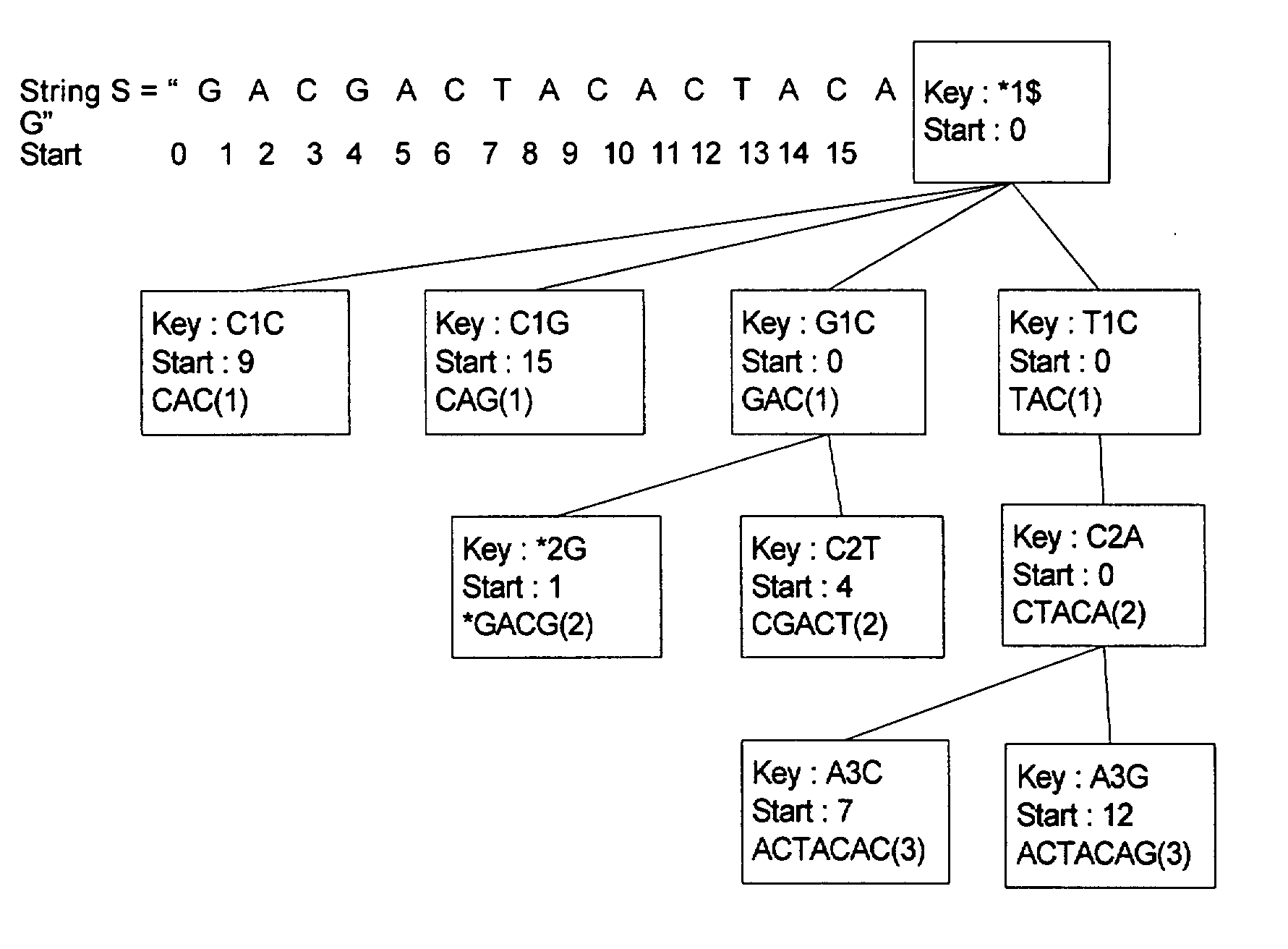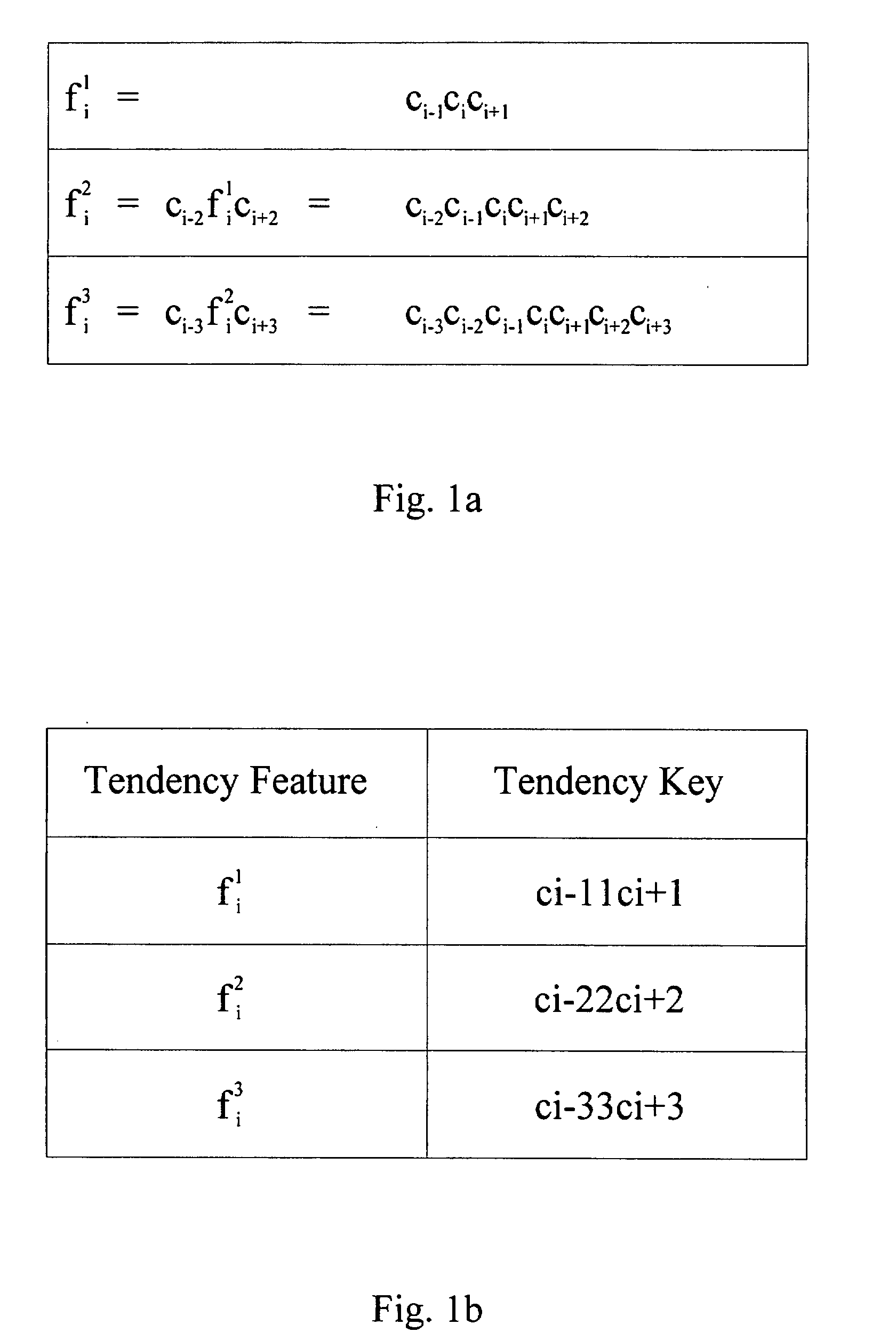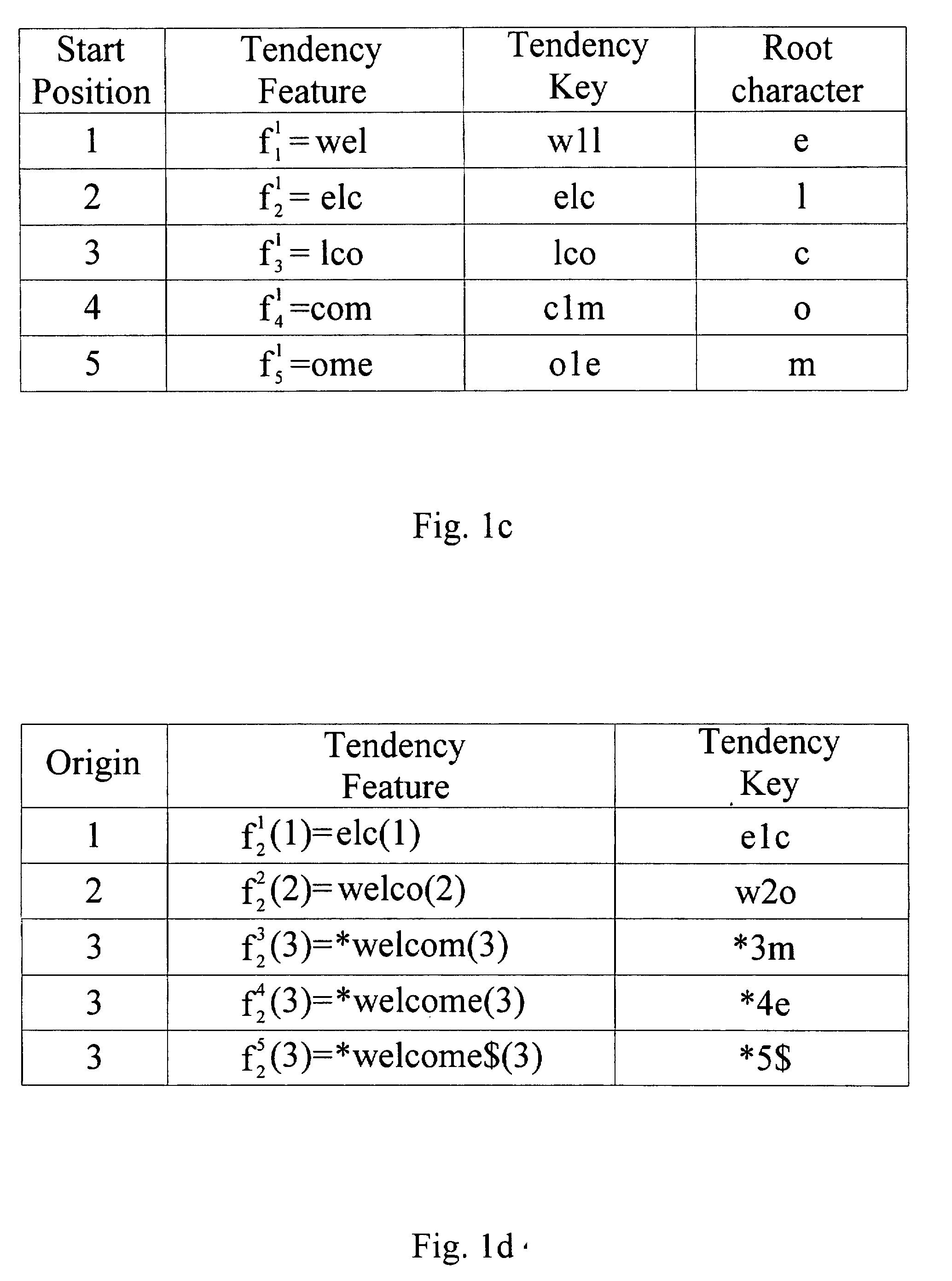Method and structure for string partial search
- Summary
- Abstract
- Description
- Claims
- Application Information
AI Technical Summary
Benefits of technology
Problems solved by technology
Method used
Image
Examples
Embodiment Construction
[0028]A structure for string partial search is disclosed in the present invention. This invention may be utilized in all kinds of computer based application, software, and data processing, also included data search via internet, intranet, or other kinds of data passage. FIG. 1a is a table showing tendency feature of the present invention. 5A string S=c0c1 . . . cn-1 of length n consists of characters from a finite character set Σ of size |Σ|. Each character ci in S has two base tendencies, Backward Tendency ci−1 and Forward Tendency ci+1, where 1≦i≦n-2. The character ci is referred to as a root character. Taking the root character ci, a Tendency Feature fi1 can be composed around ci as fi1=ci−1cici+1 in which the backward tendency ci−1 and the forward tendency ci+1 are added around ci. For any tendency feature fi1, the index i denotes the tendency feature starting position in S and 1 indicates that fi1 is a base tendency feature or a first-order tendency feature. Every fi1 has lengt...
PUM
 Login to View More
Login to View More Abstract
Description
Claims
Application Information
 Login to View More
Login to View More - R&D
- Intellectual Property
- Life Sciences
- Materials
- Tech Scout
- Unparalleled Data Quality
- Higher Quality Content
- 60% Fewer Hallucinations
Browse by: Latest US Patents, China's latest patents, Technical Efficacy Thesaurus, Application Domain, Technology Topic, Popular Technical Reports.
© 2025 PatSnap. All rights reserved.Legal|Privacy policy|Modern Slavery Act Transparency Statement|Sitemap|About US| Contact US: help@patsnap.com



